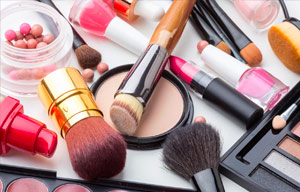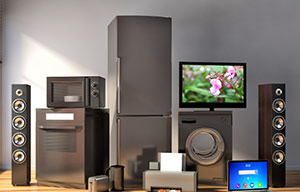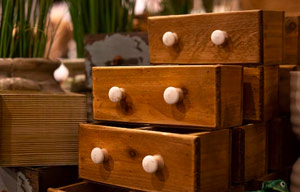1. Undang-Undang.
Undang-undang Kosmetik.
Cosmetics Law (No. 5324). Undang-undang ini menjamin produk kosmetik sampai ke masyarakat dengan cara yang aman, efektif dan bermutu tinggi, menetapkan asas-asas mengenai pemberitahuan sebelum produk dipasarkan, pengawasan dan pemeriksaan pasar, serta pemeriksaan tempat produksi produk tersebut.
Lingkup undang-undang adalah kosmetik yang digunakan pada bagian luar tubuh manusia seperti kulit ari, kuku, rambut, rambut, bibir dan alat kelamin luar, gigi dan mukosa mulut, dengan tujuan tunggal atau utama untuk membersihkan bagian-bagian ini, memberinya keharuman, mengubah penampilannya dan/atau semua preparat atau zat yang tujuannya untuk memperbaiki dan/atau melindungi atau mempertahankan bau badan.
Kementerian Kesehatan melakukan pengendalian produk kosmetik, antara lain dengan mewajibkan notifikasi dan inspeksi.
- Notifikasi: Notifikasi disampaikan ke Kementerian Kesehatan sebelum produk pertama kali dipasarkan dan ketika ada perubahan yang terjadi pada produk setelah pemberitahuan pertama.
- Inspeksi: Inspeksi dilakukan di tempat produksi produk kosmetik yang dipasok ke pasar dan serta pengawasan dilakukan dengan inspeksi pasar
Produsen dan Kewajibannya.
Produsen, baik perorangan atau berbadan hukum yang memproduksi, menyempurnakan produk kosmetik, wajib memperkenalkan dirinya sebagi produsen dengan mencantumkan nama, merek dagang, atau tanda pengenalnya pada produk. Bagi produsen diluar Turki, ketentuan di atas dilakukan oleh perwakilan atau importir yang dibe kewenangan oleh produsen.
Selain itu, setiap orang atau badan hukum yang terlibat dalam rantai pasokan produk atau yang aktivitasnya memengaruhi fitur keamanan produk dianggap sebagai produsen dan tunduk pada undang-undang ini.
Kewajiban utama produsen adalah:
- Notifikasi produk.
- Menyimpan File Informasi Produk (Product Information File).
- Mempekerjakan personel dengan tingkat kompetensi dan pengalaman profesional yang sesuai untuk memastikan kepatuhan produk terhadap peraturan perundangan.
- Mematuhi persyaratan kemasan dan pelabelan.
Kewajiban produsen lainnya:
- Dilarang memproduksi, mengemas, membuka atau mengoperasikan suatu pendirian impor tanpa memberitahu Kementerian Kesehatan, atau memperluas bidang kegiatan suatu lembaga tanpa memberitahukan perubahan yang dilakukan setelah pemberitahuan pertama.
- Perusahaan tidak dapat dioperasikan tanpa mempekerjakan staf teknis yang bertanggung jawab dan personel berkualifikasi yang dibutuhkan.
- Setiap produk kosmetik tidak dapat ditempatkan di pasar tanpa memberitahukan informasi keamanan produk kepada Pusat Penelitian Racun Kementerian Kesehatan.
- Produk kosmetik harus bersifat yang tidak akan membahayakan kesehatan manusia jika digunakan dalam kondisi normal dan dianjurkan atau jika diterapkan sesuai dengan kondisi penggunaan yang akan diperkirakan, dengan mempertimbangkan penyajian, pelabelan, penggunaan produk atau informasi yang diberikan oleh produsen.
- Produk kosmetik yang tidak mengandung bahan atau zat yang tidak boleh di luar batas dan syarat tertentu tidak dapat ditempatkan di pasar.
- Informasi pengemasan dan label produk kosmetik harus memenuhi prinsip-prinsip yang ditentukan dalam peraturan.
- Tempat produksi kosmetik wajib mengikuti prinsip-prinsip yang ditetapkan oleh Kementerian Kesehatan.
2. Regulasi.
Turki mengeluarkan regulasi tentang kosmetik untuk memastikan bahwa produk kosmetik mencapai konsumen dengan informasi yang akurat dan dapat dimengerti dengan cara yang tidak menyebabkan kesalahan dan tidak membahayakan kesehatan manusia.
Produk harus memiliki kualifikasi teknis, informasi pengemasan, pemberitahuan, penempatan di pasar, pengawasan pasar dan inspeksi.
Peraturan ini mencakup kosmetik yang diterapkan pada berbagai bagian luar tubuh manusia seperti kulit ari, kuku, rambut, rambut, bibir dan alat kelamin luar, gigi dan mukosa mulut, dengan tujuan utama atau tunggal untuk membersihkan bagian-bagian tersebut. , memberi mereka wewangian, mengubah penampilannya dan/atau Ini mencakup semua preparat atau zat yang dimaksudkan untuk memperbaiki dan/atau melindungi bau badan atau mempertahankannya dalam kondisi baik, dan klasifikasinya, informasi pengemasan dan prinsip-prinsip pemeriksaannya.
Perbedaan peraturan ini dengan peraturan sebelumnya adalah pelarangan benzylidene camphor (awalnya diizinkan), perubahan persyaratan pewarna rambut non-oksidan (termasuk dalam Daftar Bahan yang Tidak Boleh Dimasukkan ke dalam Kosmetik, Kecuali Batasan Tercatat) dan hubungan antara peraturan lokal dan Uni Eropa mengenai pembedahan vivisection.
Secara umum, peraturan ini mengatur:
- Bahan yang dilarang ada pada Kosmetik (Daftar ada pada Lampiran II regulasi),
- Bahan Yang Tidak Boleh Dikandung Kosmetik Kecuali Batasan Di Bawah terdapat (Daftar ada pada lampiran III regulasi),
- Persyaratan atau panduan keselamatan untuk produk jadi lihat pada bagian Laporan Keamanan Kosmetik.
- Daftar bahan terbatas
- Persyaratan atau panduan pelabelan (Pasal 10 Informasi Yang Terjadi pada Kemasan Internal dan Eksternal)
Lihat selengkapnya pada Regulasi Kosmetik Turki
3. Kemasan dan Pelabelan.
Regulasi ini mengatur pelabelan pada kosmetik. Peraturan ini mengecualikan kosmetik di bawah lima gram atau lima mililiter, sampel gratis dan produk dosis tunggal, jumlah nominal pada saat pengemasan ditunjukkan dalam berat atau volume.
Label pada kemasan.
Informasi pada kemasan bagian dalam dan luarnya tidak dapat dihapus, mudah terlihat dan terbaca. Informasi yang harus disertakan dalam kemasan berupa:
- Nama atau jabatan dan alamat produsen yang bertempat tinggal di negara tersebut atau nama atau jabatan dan alamat tempat kerja yang terdaftar dicantumkan.
- Batas kadaluarsa minimal suatu produk kosmetik; Ini adalah jangka waktu dimana, jika disimpan dalam kondisi normal, ia tetap memenuhi fungsi aslinya dan tetap mematuhi ketentuan. Simbol Yang Digunakan Dalam Kemasan/Wadah.
 |
 |
 |
| Lihat informasi tambahan | Waktu penggunaan setelah dibuka | Minumum holding time |
- Kode produksi atau nomor biaya produksi dicantumkan.
- Jika produk tidak terlihat jelas dari segi cara penyajiannya, fungsi produk tersebut dicantumkan pada kemasannya.
- Daftar komponen produk dicantumkan pada kemasan dalam urutan menurun sesuai dengan beratnya pada saat penambahan.
4. Standar.
Berikut daftar standar mutu untuk produk kosmetik di Turki:
- TS 10232 Cosmetics - Hair care preparations - Determination of oxalic acid - Titrimetric method
- TS 10233 Cosmetics - Hair care preparations - Diagnosis of oxalic acid - Chemical method
- TS 10234 Cosmetics-Hair care preparations-Oxidizing substance detection-Part I: Persulfates, bromates and hydrogen peroxide-Paper chromatography method
- TS 10235 Cosmetics-Determination of free formaldehyde-Colorimetric and titrimetric method
- TS 10236 Cosmetics-Nitromethane-Diagnosis by chemical method and determination by gas chromatography method
- TS 10237 Cosmetics-Hair care preparations-Determination of quinine-High pressure liquid chromatography method
- TS 10238 Cosmetics-Hair care preparations-Kinin diagnosis-Thin layer chromatography method
- TS 10239 Cosmetics-Hair care preparations-Resorcinol diagnosis-Thin layer chromatography method
- TS 10240 Cosmetics-Hair care preparations-Resorcinol determination-Gas chromatography method
- TS 10241 Cosmetics-Determination of chlorobutanol-Gas chromatography method
- TS 10242 Cosmetics-Sodium nitrite determination - UV spectrophotometric method
- TS 10243 Cosmetics-Determination of organic mercury compounds in eye preparations-Atomic absorption spectrophotometric method
- TS 10244 Cosmetics - Detection of organic mercury compounds in eye preparations - Thin layer chromatography method
- TS 10245 Cosmetics-Determination of free ammonia titrimetric method
- TS 10246 Cosmetics-Nitrite diagnosis-Chemical method
- TS 10247 Cosmetics-Quinolin-8-Ol determination-Uv spectrophotometric method
- TS 10248 Cosmetics-Kinolin-8-Ol diagnosis-Thin layer chromatography method
- TS 10249 Cosmetics - Hexachlorophene diagnosis - Thin layer chromatography method
- TS 10250 Cosmetics-Determination of hexachlorophene-Gas chromatography method
- TS 10252 Bentonite-used in the production of pharmaceuticals and cosmetics
- TS 10339 Cosmetics-Mercaptoacetic acid diagnosis chemical and thin layer chromatography method
- TS 10340 Cosmetics- Hair care preparations-Determination of hydrogen peroxide-Titrimetric method
- TS 10898 Cosmetics factories - General rules
- TS 11027 Food additives, pharmaceutical and cosmetic auxiliary substances - Ash determination
- TS 11028 Cosmetics - Glycerol 1-(4-Aminobenzoate) diagnosis - Thin layer chromatography method
- TS 11029 Cosmetics - Hair care preparations - Oxidative substance detection - Part 2: Barium peroxide diagnosis - Paper chromatography method
- TS 11030 Cosmetics - Determination of inorganic sulphides and hydrogen sulfide - Titrimetric method
- TS 11031 Cosmetics - Inorganic sulphides and hydrogen sulfide diagnosis-Chemical method
- TS 11032 Cosmetics - Determination of methylene chloride and methyl chloroform - Gas chromatography method
- TS 11033 Cosmetics - Methanol determination - Gas chromatography method
- TS 11034 Cosmetics - Determination of mercaptoacetic acid - Iodometric titration and gas chromatography methods
- TS 11035 Cosmetics-Sampling rules
- TS 11036 Cosmetics - 4 - Hydroxybenzenesulfonic acid - Diagnosis by thin layer chromatography method and determination by titrimetric method
- TS 11037 Cosmetics - Determination of Glycerol 1-(4-Aminobenzoate) - High pressure liquid chromatography method
- TS 11246 Ammonium chloride-used in cosmetics industry
- TS 2973 Talc used in the cosmetics industry
- TS 4809 Sensitivity test methods of cosmetics
- TS 5178/T1 Cosmetics, body cleaning and care materials - Cologne
- TS 5178/T1 Cosmetics, body cleaning and care materials – Cologne Modifications are free
- TS 5922 Pharmaceutical, food and cosmetic dyes-Chemical diagnostic reactions
- TS 5922 Pharmaceutical, food and cosmetic dyes-Chemical diagnostic reactions
- TS 5923 Pharmaceutical, food and cosmetic dyes-Determination of insoluble matter
- TS 5924 Pharmaceutical, food and cosmetic dyes-Quantification-Titrimetric method with titanium(III) chloride
- TS 6189 Pharmaceutical, food and cosmetic dyes - Diagnosis by thin layer chromatography
- TS 6190 Determination of aromatic amines in pharmaceutical, food and cosmetic dyes
- TS 6191 Pharmaceutical, food and cosmetic dyes-Diagnosis and quantification-Spectrophotometric method
- TS 6224 Pharmaceutical, food and cosmetic dyes-Tartrazine
- TS 6225 Pharmaceutical, food and cosmetic dyes-Sunset yellow fcf
- TS 6226 Pharmaceutical, food and cosmetic dyes-Erythrosine
- TS 6671 Sodium carboxymethyl cellulose-Used in cosmetics and pharmaceutical industry
- TS 7257 Pharmaceutical, food and cosmetic dyes - Determination of chloride, sulfate, lead, arsenic content and drying loss
- TS 7258 Pharmaceutical, food and cosmetic dyes-Determination of synthesis side dyes and synthesis intermediates
- TS 7500 Cosmetic cotton
- TS 8223 Determination of arsenic limit in food additives, pharmaceutical and cosmetic excipients
- TS 8224 Determination of acid value in food additives, pharmaceutical and cosmetic auxiliaries
- TS 8225 Determination of heavy metal limit in food additives, pharmaceutical and cosmetic excipients
- TS 8226 Determination of freezing point in food additives, pharmaceutical and cosmetic auxiliaries
- TS 8387 Propyl gallate-
- TS 8388 Butyl hydroxyanisole-used in food, medicine and cosmetics industry
- TS 8389 Polysorbate monoesters -, used in the food, pharmaceutical and cosmetic industry
- TS 8390 Methylparaben-used in food, medicine and cosmetics industry
- TS 8391 Determination of saponification value in food additives, pharmaceutical and cosmetic auxiliaries
- TS 8392 Determination of hydroxyl value in food additives, pharmaceutical and cosmetic excipients
- TS 8393 Determination of iodine value in food additives, pharmaceutical and cosmetic excipients
- TS 8394 Determination of melting point in food additives, pharmaceutical and cosmetic excipients
- TS 8395 Determination of ester value in food additives, pharmaceutical and cosmetic excipients
- TS 8978 Stearic acid-used in the cosmetics industry
- TS 9687 Pharmaceutical, food and cosmetic dyes - Indigotine
- TS 9688 Pharmaceutical, food and cosmetic dyes-Ponceau 4r
- TS 9689 Pharmaceutical and cosmetic dyes-Brillant blue fcf
- TS 9899 Chlorobutanol-used in food, pharmaceutical and cosmetic industry
- TS 9900 Agar-used in food, medicine and cosmetics industry
- TS 9943 Butylparaben-Used in the pharmaceutical and cosmetic industry
- TS 9944 Thymerosal-Used in the pharmaceutical and cosmetic industry
- TS EN 16342 Cosmetics - Analysis of cosmetic products - Quantitative determination of zinc pyrithione, piroctone olamine and climbazole in surfactant containing cosmetic anti-dandruff products
- TS EN 16343 Cosmetics - Analysis of cosmetic products - Determination of 3-iodo-2-propynyl butylcarbamate (IPBC) in cosmetic preparations, LC-MS methods
- TS EN 16343 Cosmetics - Analysis of cosmetic products - Determination of 3-iodo-2-propynyl butylcarbamate (IPBC) in cosmetic preparations, LC-MS methods
- TS EN 16344 Cosmetics - Analysis of cosmetic products - Screening for UV-filters in cosmetic products and quantitative determination of 10 UV-filters by HPLC.
- TS EN 16521 Cosmetics - Analytical methods - GC/MS method for the analysis and identification of 12 phthalates in cosmetic samples ready for analytical injection
- TS EN 16956 Cosmetics - Analytical methods - HPLC / UV method for the determination and analysis of the active ingredients of hydroquinone, hydroquinone and corticosteroids in cosmetic products
- TS EN 17156 Cosmetics - Analytical methods - LC/UV method for identification and quantitative determination of 22 organic UV filters in use in the EU
- TS EN IEC 60335-2-113 Safety rules - Electrical appliances used at home and similar places - Part 2-113: Specific requirements for cosmetic and beauty care devices containing lasers and intense light sources
- TS EN IEC 60335-2-113/A11 Safety rules - Electrical appliances used in households and similar places - Part 2-113: Specific requirements for cosmetic and beauty care devices containing lasers and intense light sources
- TS EN ISO 11930 (English Text)Cosmetics - Microbiology - Evaluation of antimicrobial protection of a cosmetic product
- TS EN ISO 11930/A1 Cosmetics - Microbiology - Evaluation of antimicrobial protection of a cosmetic product - Amendment 1
- TS EN ISO 16212 Cosmetics - Microbiology - Yeast and mold count
- TS EN ISO 16212/A1 Cosmetics - Microbiology - Yeast and mold counting - Amendment 1
- TS EN ISO 16217 (English Text)Cosmetics - Sun protection test methods - Water immersion procedure to determine water resistance
- TS EN ISO 17516 Cosmetics - Microbiology - Microbiological Limits
- TS EN ISO 17516 Cosmetics - Microbiology - Microbiological Limits (ISO 17516:2014)
- TS EN ISO 18415 Cosmetics - Microbiology - Searching for specific and non-specific microorganisms
- TS EN ISO 18415/A1 Cosmetics - Microbiology - Searching for specific and non-specific microorganisms - Amendment 1
- TS EN ISO 18416 Cosmetics - Microbiology - Search for Candida albicans
- TS EN ISO 18416/A1 Cosmetics - Microbiology - Search for Candida albicans - Amendment 1
- TS EN ISO 18861 Cosmetics - Sun protection test methods - Water resistance percentage
- TS EN ISO 21148 Cosmetics-Microbiology-General rules for microbiological determinations
- TS EN ISO 21149 Cosmetics-Microbiology- Aerobic mesophilic bacteria count and search
- TS EN ISO 21149/A1 Cosmetics - Microbiology - Aerobic mesophilic bacteria count and detection - Amendment 1
- TS EN ISO 21150 Cosmetics - Microbiology - Escherichia coli search
- TS EN ISO 21150/A1 Cosmetics - Microbiology - Escherichia coli search - Amendment 1
- TS EN ISO 21322 Cosmetics - Microbiology - Testing of impregnated or coated wipes and masks
- TS EN ISO 21392 Cosmetics-Analytical methods-Determination of heavy metal traces in finished cosmetic grapes using ICP/MS technique
- TS EN ISO 22716 Cosmetics - Good Manufacturing Practices (GMP) - Guidelines on Good Manufacturing Practices
- TS EN ISO 22717 Cosmetics - Microbiology - Search for Pseudomonas aeruginosa
- TS EN ISO 22717/A1 Cosmetics - Microbiology - Search for Pseudomonas aeruginosa - Amendment 1
- TS EN ISO 22718 Cosmetics - Microbiology - Search for Staphylococcus aureus
- TS EN ISO 22718/A1 Cosmetics - Microbiology - Search for Staphylococcus aureus - Amendment 1
- TS EN ISO 23674 Cosmetics - Analytical Methods - Direct determination of iva traces in cosmetics with thermal decomposition and atomic absorption spectrometer (mercury analyzer)
- TS EN ISO 23821 Cosmetics - Analytical methods - Direct determination of mercury traces in cosmetics with atomic absorption spectrometry (AAS) cold steam technology after pressure fractionation
- TS EN ISO 24442 Cosmetics - Sun protection test methods - In vivo determination of uv protection sunscreen
- TS EN ISO 24443 Cosmetics - In vitro determination of UVA protection sunscreen
- TS EN ISO 24444 Cosmetics - Sun protection test methods - In vivo determination of sun protection factor (spf)
- TS EN ISO 24444/A1 Cosmetics - Sun protection test methods - In vivo determination of sun protection factor (spf) - Amendment 1
- TS EN ISO 29621 Cosmetics - Microbiology - Risk assessment and microbiological identification of low risk groups
- TS ISO 12787 Cosmetics - Analytical methods - Validation criteria for analytical results using chromatographic techniques
- TS ISO 16128-1 Guide to technical definitions and criteria of natural and organic cosmetic components and products – Part 1: Definitions of ingredients
- TS ISO 16128-1 Guide on natural and organic cosmetic components and technical definitions and criteria of products – Part 1: Definitions of ingredients
- TS ISO 16128-2 Cosmetics - Technical definitions and guidelines on criteria for natural and organic cosmetic ingredients - Part 2: Criteria for ingredients and products
- TS ISO 16128-2/Amd 1 Cosmetics - Technical definitions and guidelines on criteria for natural and organic cosmetic ingredients - Part 2: Criteria for ingredients and products - Amendment 1
- TS OIC/SMIIC 4 Halal Cosmetics - General Rules
- TS OIC/SMIIC 4 Halal Cosmetics - General Rules
- TSE CEN ISO/TR 19838 Microbiology - Cosmetics - Guide for the implementation of ISO standards on cosmetic microbiology (ISO/TR 19838:2016)
- TSE CEN ISO/TR 24475 Cosmetics - Good manufacturing practices (GMP) - General education document
- TSE CEN ISO/TR 26369 Cosmetics - Sun protectiontest methods - Review and evaluation of methods to assess the photoprotection of sun protection products
- TSE ISO/TR 18811 Cosmetics - Guidelines for stability testing of cosmetic products
- TSE ISO/TS 22176 Cosmetics - Analytical methods - Development of a global approach for the validation of quantitative analytical methods
5. Lembaga Berwenang.










